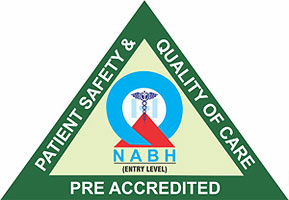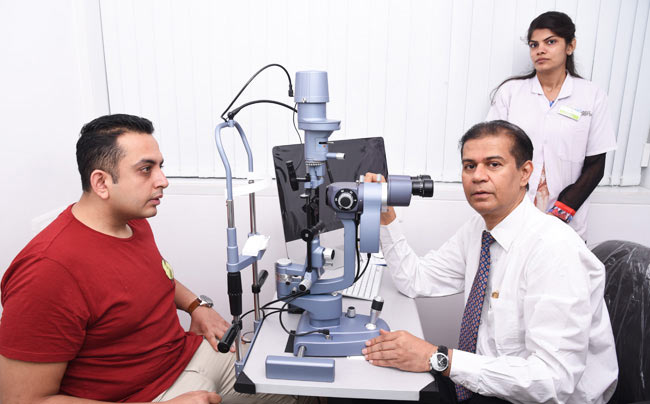+91-7291089674 (Bandra)
+91-7291092120 (Kandivali)





April 30, 2019 | Author: Admin
Low vision is not defined by specific acuity limits. It is a condition that involves a minimal ability to see , which is unresolved or uncorrected by traditional eye glasses, contact lenses or corrective surgery. However, “persons with low vision may be helped to use their residual vision with special visual devices”.
Low vision is a continuum. Untreatable eye diseases causing low vision have always been overlooked. We present a few practical pearls on low vision devices, for everyday practice, for general ophthalmologists.
There are certain general principles that need to be followed when assessing, training and prescribing low vision devices. The foremost prerequisite is proper lighting. One needs to assess whether visual skills have been mastered e.g. scanning, tracking and reading. The material used during assessment should be interesting, especially for children. Proper posture and reading distance should be maintained.
Low vision devices helps the low vision client to use the residual sight more effectively, thereby enabling them to continue reading and participating in hobbies, activities and profession. These low vision devices range from simple to complex, depending on individual needs.
The low vision devices are categorized as:-
Example: Lamp, Cap, Writing guide, signature guide, Reading stand etc.
Uses:
Advantages
But exact reading distance is important with microscopic glasses for proper magnification and clarity.
Practical tips for the clients with microscopic glasses:
When microscopic glasses are prescribed as low vision aids, it is necessary to inform the client of the optical principles and all the disadvantages. Low vision assistants should instruct clients in several areas. The most important is reading distance. The best way to teach adaptation to short focal lengths is to have the clients touch his nose with the reading material, then slowly take it back, until it focuses.
Uses
Advantages
Note: the patient has to hold the hand magnifier, thus not suitable for work involving use of hands.
Practical tips for the clients with Hand Magnifier:
When clients begin to use hand magnifiers, the tendency is to hold the lens up to the eye and look through it. They do not seem to grasp the idea of holding the magnifier near the page and maintaining the longer reading distance. To make it clear, have your client start with the magnifier on the page. They should then raise it slowly until the magnification is maximum.
Uses:
Advantages:
But may result in poor posture after prolonged use of stand magnifier.
Practical tips for the clients with Stand Magnifier:
The eye-to-lens distance causes some difficulty and requires explanation. It is usual for the patients to involuntarily pull on the stand magnifiers, as if viewing through a telescope. This will improve the field of view only minimally, and blur the image if accommodation is inadequate. Instruct your client to maintain an appropriate reading distance.
Uses:
Advantages:
Other designs of telescope are also available
The disadvantage is the difficulty in reading & writing/ copying simultaneously.
Practical tips for the clients with Telescopes:
Client should be taught to use a telescope in several steps. First, the instructor should focus the telescope for infinity and teach the user the correct way to hold it. Using two hands to hold the telescope provides more stability than one, and one arm or hand should be supported against a stationary object or the body. The client should first view the distant object with the naked eye, & only then raise the telescope to view it more clearly.
Fresnel Prisms: These forms of prisms can be used to correct several visual disorders. These are more comfortable and cosmetically appealing than conventional prisms, & it can be stuck onto spectacles.
Useful as a field expander in case of hemianopias.
Models available: Head mounted, Hand Held Camera’s, Separate Monitors, Stand- Alone, Television Screen.
The magnification is adjustable, according to user need & preference.
Uses:
Visually impaired people can use the same low vision aids for regular reading activity. Children can use the CCTV to enlarge the pictures, graphics and very small objects (such as coins, plants, insects etc.)
CCTV was not easily acceptable earlier due to high cost, but cost-effective versions are now available.
Low Vision and its management still remains a grey area for most health care providers in the field of ophthalmology. To meet these demands, all clients with low vision should receive an early and appropriate referral, preferably to an integrated programme. Low cost high quality devices as made available to meet the requirements.